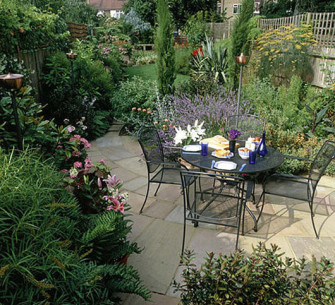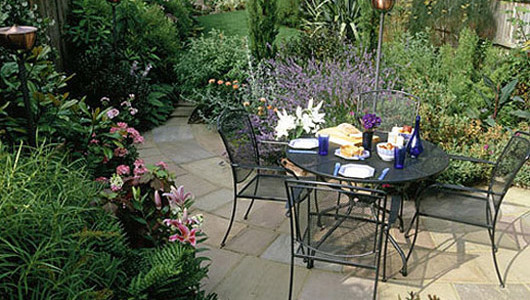4 Tips to Create Outdoor Privacy
 At the end of a long day, dinner on the deck or a cocktail on the patio can offer welcome respite — unless you’re sipping that drink under the watchful eyes of your neighbors. Small lots, busy traffic and loud neighbors can take the joy out of outdoor spaces. Short of building a stone wall and moat, there are steps you can take to make your outdoor space more relaxing. Of course, before starting any sort of construction or planting project, you’ll want to check with your local municipality and homeowners association. Many cities — and even neighborhoods — have restrictions on height, setback from the street, appearance or materials that can be used in establishing privacy screens. These four design features can go a long way toward making your private property more private.
At the end of a long day, dinner on the deck or a cocktail on the patio can offer welcome respite — unless you’re sipping that drink under the watchful eyes of your neighbors. Small lots, busy traffic and loud neighbors can take the joy out of outdoor spaces. Short of building a stone wall and moat, there are steps you can take to make your outdoor space more relaxing. Of course, before starting any sort of construction or planting project, you’ll want to check with your local municipality and homeowners association. Many cities — and even neighborhoods — have restrictions on height, setback from the street, appearance or materials that can be used in establishing privacy screens. These four design features can go a long way toward making your private property more private.
Walls and Fences
Building a wall or fence is, perhaps, the most obvious way to add privacy to your yard. Wood fences are the fastest and cheapest to erect; in fact, you can buy prefabricated sections of wood fencing from home improvement stores and build a fence yourself in a few days. Open lattice can be used to break up the mass of a wood fence. If you like the look of wood but don’t want to worry about rot or upkeep, vinyl may be a good option. Vinyl fencing resists discoloring and is available in a wide range of styles and colors. Stone and brick can be used to create attractive, long-lasting barriers — or, if you overdo it, they can take on a prisonlike air. If you’re drawn to stone or brick, you might consider creating a shorter retaining wall that can be paired with screens or greenery. In many parts of the country, cinder blocks are the material of choice for property walls. Concrete tends to look stark. Consider using paint or decorative ironwork to add interest, or soften the look with vines or other plantings.
Hedges
Even novice gardeners and landscapers can plant evergreens to create a living, year-round privacy screen. Planting trees or shrubs in a zig-zag — rather than straight — line will allow the plants better access to sun and will create a fuller visual effect. Boxwood, yew, arborvitae, juniper, laurel and holly are among the nation’s most popular hedge plants. You’ll want to talk to knowledgeable landscape experts to learn which plants do best in your soil and weather conditions. Also be honest about how much pruning you’re willing to do: Some plants require considerably more upkeep than others.
Screens and Roofs
A lattice or louvered wood panel, ornamental iron or well-placed stained glass partitions can help create cozy spaces within a yard. Most homeowners prefer to anchor screens into the ground so they don’t fall victim to the occasional wind gusts. Semi-transparent structures won’t offer complete privacy, but can blur sightlines and add visual interest to a landscape. Fabric panels or drapes are an easy, inexpensive way to make a porch or patio area more intimate. Similarly, adding an awning or pergola-style roof covered with vines can help create a space that’s secluded from nosy neighbors.
Water
If it’s neighborhood noise you’re trying to tune out, a gurgling fountain may help mask unwanted sounds. Water features range from off-the-shelf tabletop versions that cost less than $100 to expansive, custom waterfalls that can run upward of $20,000. Be aware that if your water feature rushes over too many tiers or if the waterfall is too high, you may be creating a noise that’s louder and more distracting than the one you’re trying to cover up.

